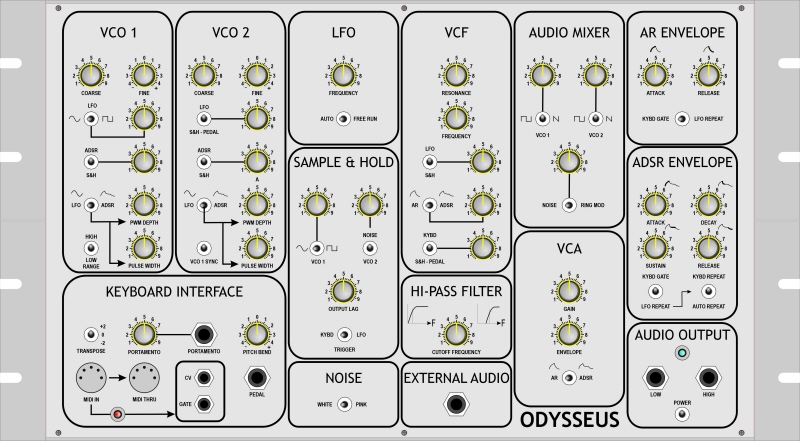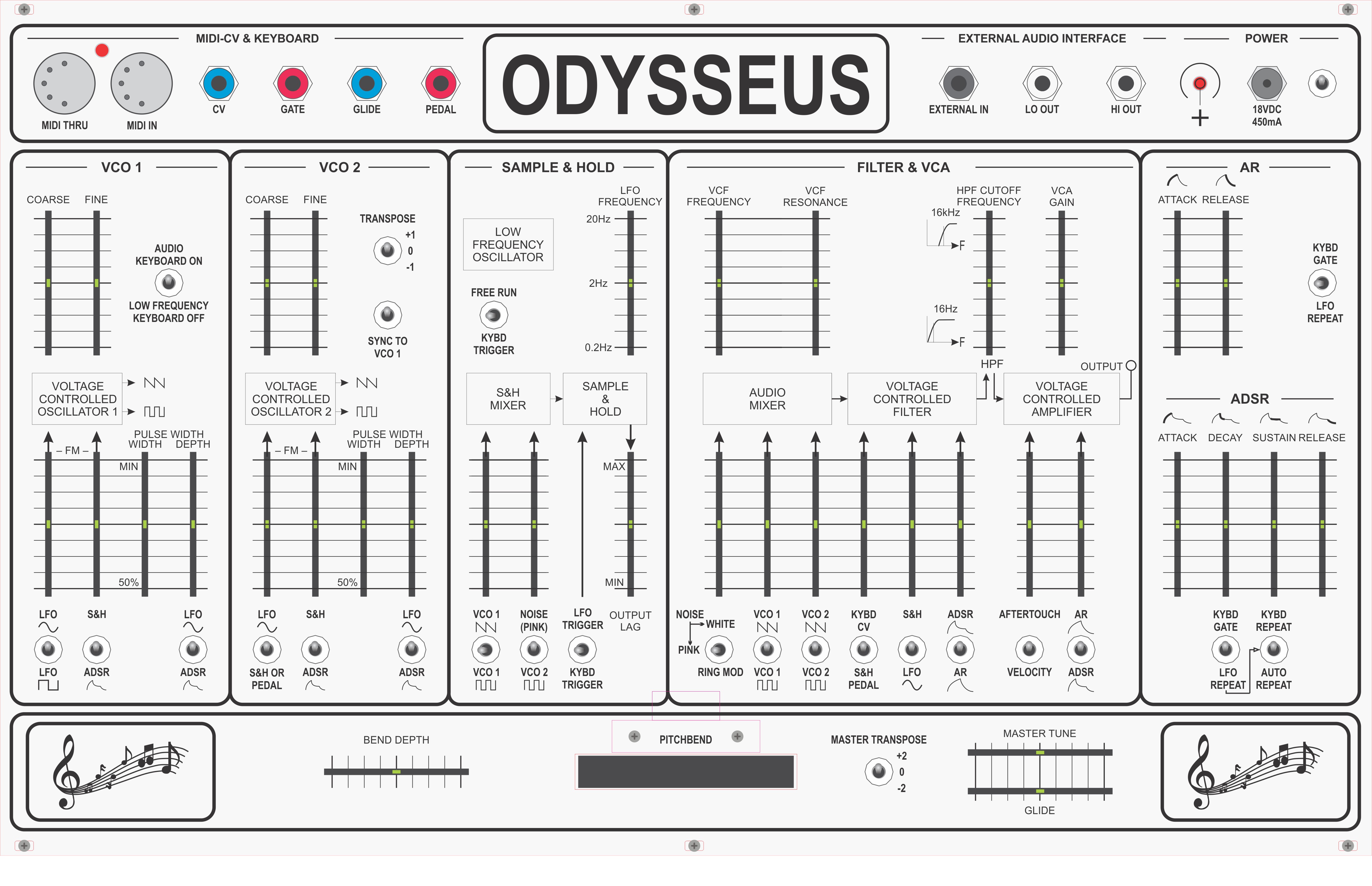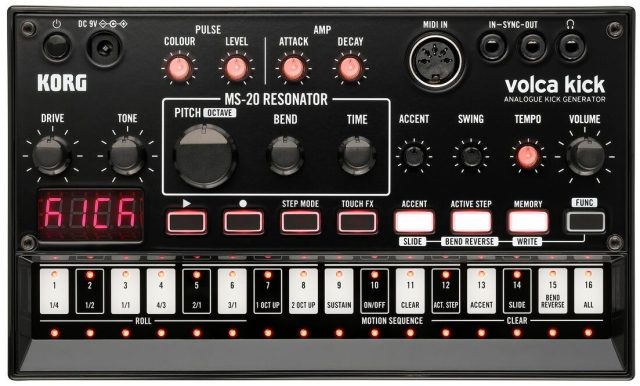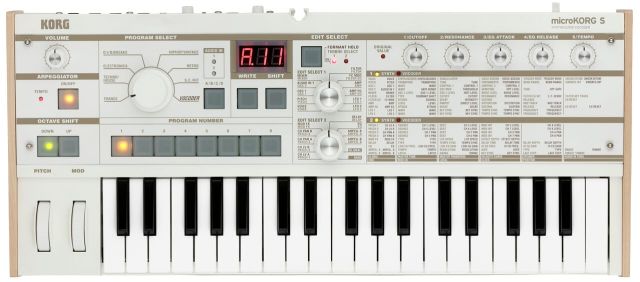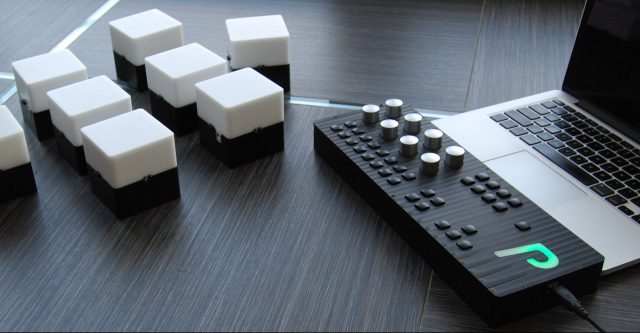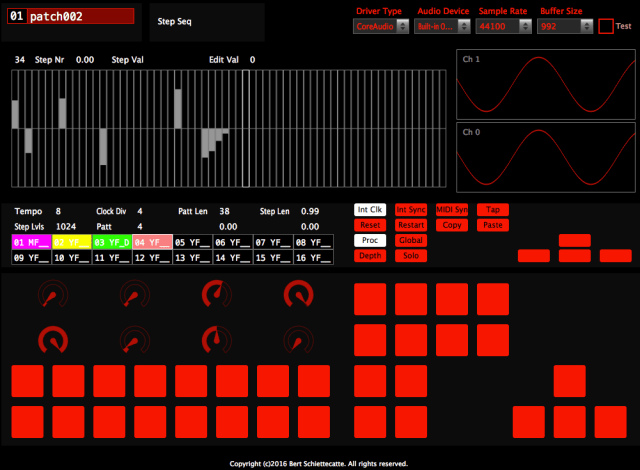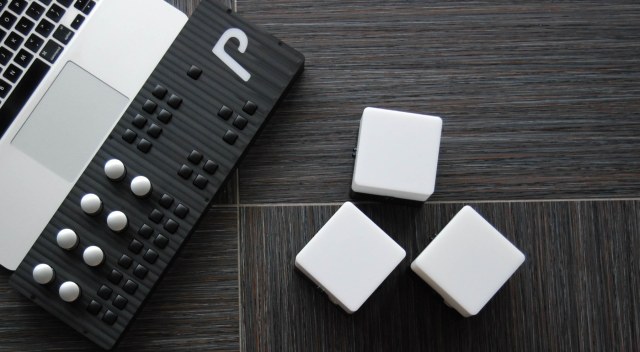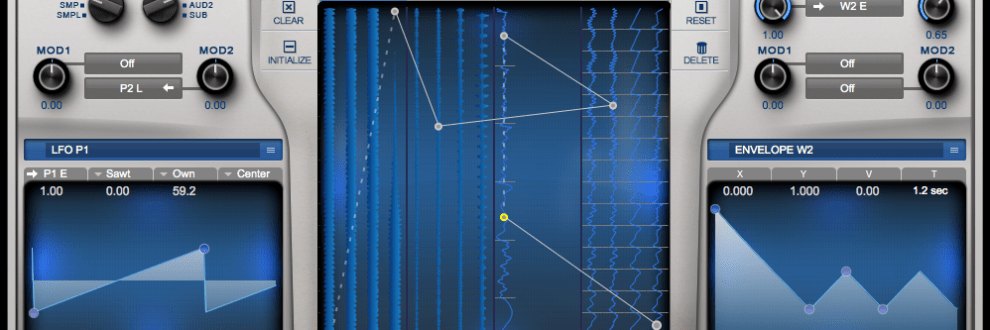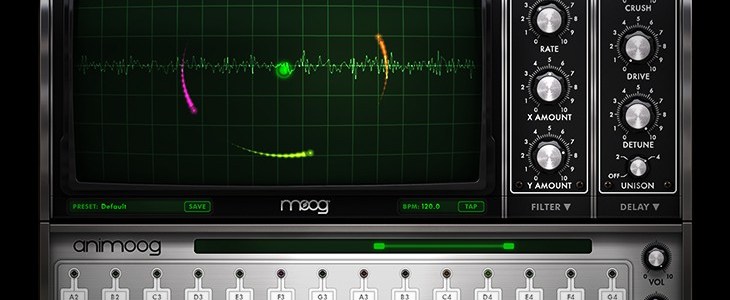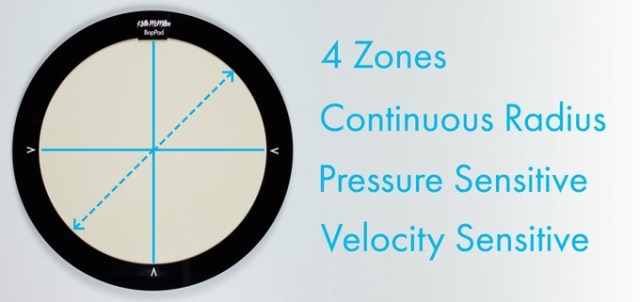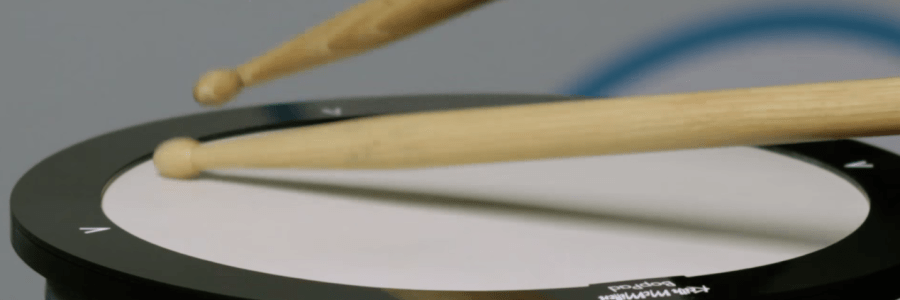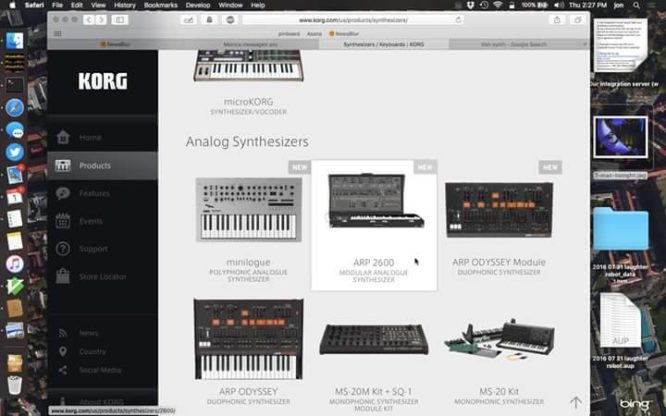“Musicians who gravitate to microKORG can now choose a version that needs no additional speakers, monitors, or other connections to play,” says Korg’s James Sajeva. “The program memory capacity has also been increased twofold, and we’ve added 64 all-new preset programs.”
microKORG-S offers all of the original microKORG’s functionality, including ‘Big Knob’ genre selector for quickly selecting groups of presets, a four-band vocoder with an included microphone, arpeggiator and optional battery operation.
Pricing and Availability
The microKORG-S will be available in September of 2016 for $499.99. See the Korg
site for details.
microKORG-S Specifications:
Sound Generation:
Analog Modeling Synthesis System
Synthesizer Programs:
Multi Timbres: 2 (max, Split/Dual Mode)
Maximum Polyphony: 4 voices
Structure: 2 Oscillator + Noise Generator
Multi Mode Filter (-24dB/oct LPF, -12dB/oct LPF/BPF/HPF)
EG x2
LFO x2
Virtual Patch x4
Vocoder Programs:
Maximum Polyphony: 4 voices
Structure: 1 Oscillator + Noise Generator
EG x1
LFO x 2
8 Channels vocoder
Level and pan of each channel can be edited
Formant Shift function
Programs:
256 programs (192 Presets / 64 Users)
Up to eight favorite programs can be registered
Effects:
Modulation effects: flanger / chorus, phaser, ensemble (3 types)
Delay: stereo, cross, L/R (3 types)
Equalizer
Arpeggiator:
6 types (UP, DOWN, ALT1/2, Random, Trigger), Step Arpeggiator function
Controls:
Real-Time control knob x5, Arpeggiator ON/OFF
Keyboards:
37-keys (mini-keyboard, velocity sensitive)
Inputs:
AUDIO IN 1 CONDENSER (with MIC/LINE switch, +5V, mini phone jack)
AUDIO IN 1 DYNAMIC (with MIC/LINE switch, 1/4” phone jack)
AUDIO IN 2 LINE (1/4” phone jack)
Outputs:
L/MONO, R (1/4” phone jacks)
Headphones:
(1/4” stereo phone jack)
MIDI:
IN, OUT, THRU
Amp Output / Speaker:
3 W / 4 cm x 1, 0.5 W / 3.5 cm x 2
Display:
3 characters x1 line with 8 segment LED
Power Supply:
DC 9V (AC adapter), or six AA alkaline batteries (sold separately)
Battery Life:
Approximately 4 hours or more (when using alkaline batteries)
Dimensions (W x D x H):
524 x 232 x 70 mm / 20.63″ x 9.13″ x 2.76″
Weight:
2.5 kg / 5.51 lbs.
(without batteries and included microphone)
Included Items:
AC adapter (DC 9V), Condenser Microphone
Accessories:
Soft Case: SC-micro-MSG
